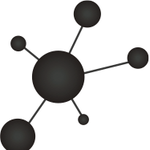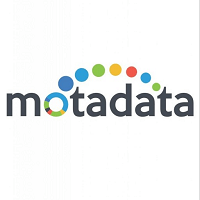Yes, network monitoring software can be accessed from various devices and platforms. Most modern software is designed to work on a variety of devices, including desktops, laptops, tablets, and smartphones. They can also be accessible using several operating systems, including Windows, Mac, and Linux. This versatility enables users to monitor their network from anywhere and on any device, receiving real-time updates and notifications about its state and performance.
List of 20 Best Network Monitoring Software
Icinga is an essential monitoring software that helps you keep your infrastructure at peak performance. Through instant alerts, comprehensive analysis, and effortless integration, Icinga empowers you to take a proactive approach to maintaining your s...Read More Icinga
NetFoundry, the solution for rapid creation of application-specific, zero trust, global transport networks. Our user-friendly open-source software enables effortless integration of high performance and security features. Experience the ease and power...Read More NetFoundry
ManageEngine Log360 is a log management system providing a comprehensive solution for real-time log collection, analysis, correlation, and archival. Its advanced features not only facilitate efficient log management but also safeguard confidential da...Read More ManageEngine Log360
n-Command MSP, an advanced network management software that maximizes network performance. Equipped with real-time monitoring, automated alerts, and comprehensive analytics, it simplifies network operations and reduces downtime. Gain valuable insight...Read More n-Command MSP
Splynx is a software specifically designed for small and medium-sized ISPs. It offers a complete solution, perfect for elevating your business and establishing yourself as the top ISP in your area. Experience a user-friendly interface and try out the...Read More Splynx
StatusGator is a status page solution that keeps you informed about the availability of your essential services. With real-time updates and alerts, StatusGator allows DevOps, IT Help Desk, and Education teams to proactively address any downtime and m...Read More StatusGator
Checkmk is monitoring software designed for modern hybrid IT environments. Its automated and scalable capabilities make it an ideal solution for businesses of any size. With a vast library of more than 2,000 plugins, Checkmk provides a holistic view...Read More Checkmk
Unimus is a Network Automation and Configuration Management software that simplifies network deployment and streamlines user experience. With Unimus, you dont need to master complicated abstraction or templating languages. Our user-friendly interface...Read More Unimus
Elecard Boro - a solution equipped to efficiently probe and monitor various streaming protocols such as UDP, RTP, HTTP, HLS, DASH, and SRT. It accurately measures QoS and QoE parameters, leading to enhanced network performance and superior user exper...Read More Elecard Boro
Experience the ultimate network performance monitoring with Sinefa. Our cutting-edge tool offers real-time insights to enhance user experience, minimize downtime, and optimize application performance. Empower your IT team to proactively address netwo...Read More Sinefa
Network Olympus Monitoring is solution for maintaining maximum performance of your network. Keep track of all events, create personalized scenarios, and utilize the tool to its full potential for optimal results from your network devices. An essentia...Read More Network Olympus Monitoring
Site24x7 is a powerful, all-in-one monitoring solution built for DevOps teams, system engineers, and IT admins. With its cloud-based platform, Site24x7 provides thorough monitoring of websites, servers, networks, applications, and cloud services, cat...Read More Site24x7
Liongard is a platform for MSPs. Streamline your workflow with centralized data visibility and automated features like discovery, documentation, and auditing. Boost productivity, standardize processes, and secure customer systems with ease. Spend les...Read More Liongard
SprintWork Distraction Blocker, an effective solution for reducing time-wasting activities such as social media and gaming. Our powerful software offers advanced features like multiple block and allow lists, wildcard support, scheduling, and lock dow...Read More SprintWork Distraction Blocker
Vaeto Network Security Monitoring solution for safeguarding your network and endpoints. Our cutting-edge cyber security software offers unparalleled protection using the most advanced tools and technology. With uncompromising standards, it sets itsel...Read More Vaeto Network Security Monitering
LogicMonitor is an advanced IT asset tracking solution that comes with pre-configured and customizable server options for seamless collaboration within your team. It offers real-time data monitoring and analysis, facilitating accurate forecasting to...Read More LogicMonitor
Netreo is a IT infrastructure monitoring solution designed for optimized operations. With full-stack observability, real-time dashboards, and automated processes, Netreo streamlines monitoring tasks and boosts team efficiency. Its versatile applicati...Read More Netreo
Motadata AIOps, developed by Mindarray Systems Pvt. Limited, is a dynamic software designed to streamline IT monitoring and management. With its advanced capabilities, it enables real-time processing, correlation, and smart visualization of vital net...Read More Motadata AIOps
Nagios is website monitoring tool for reliable performance, availability, and content checks. Its features include HTTP status and URL monitoring, as well as detection of hijacking attempts. This makes Nagios the perfect solution for maintaining smoo...Read More Nagios
PRTG is software for website monitoring that offers a range of tools to closely monitor your networks performance and ensure the availability of its components. It uses advanced technologies to track traffic, monitor usage, and provide real-time upda...Read More PRTG
Learn More About Network Monitoring Software
- What Is Network Monitoring Software?
- What Are The Recent Trends In Network Monitoring Software?
- Benefits Of Using Network Monitoring Software
- Important Factors To Consider While Purchasing Network Monitoring Software?
- What Are The Key Features To Look For In Network Monitoring Software?
- Why Do Businesses Need Network Monitoring Software?
- How Much Time Is Required To Implement Network Monitoring Software?
- What Is The Level Of Customization Available In Network Monitoring Software?
- Which Industries Can Benefit The Most From Network Monitoring Software?
- Conclusion
What Is Network Monitoring Software?
Network Monitoring Software enables enterprises to monitor, manage, and evaluate their network infrastructure in real time. It offers complete insight into all network activity, such as traffic flow, device performance, and security concerns. At its core, Network Monitoring Software collects data from numerous network devices and displays it in a consolidated dashboard, allowing IT personnel to discover and troubleshoot any issues that may impact network performance.
This data may contain information on bandwidth utilization, application performance, network latency, and so on. In addition to monitoring network activity, this software includes functions like device detection, mapping, and inventory management to assist enterprises keep track of their network assets. It can also provide reports and warnings for crucial network events, allowing IT teams to deal with any issues before they arise.
Network Monitoring Software is critical to ensure a business's network runs smoothly and securely. It enables businesses to quickly discover and repair network issues, decreasing downtime while enhancing overall network performance and efficiency. With its comprehensive features and real-time monitoring capabilities, this software is a must-have for any corporation seeking to maintain a reliable and effective network infrastructure.
What Are The Recent Trends In Network Monitoring Software?
Network monitoring software has become a vital tool for enterprises of all sizes, allowing them to monitor and manage their networks' performance, security, and availability. In recent years, the industry has seen substantial advancements and developing trends that have the potential to define the future of network management software. One of the most noticeable trends in network monitoring software is the growing use of cloud-based solutions.
This move to the cloud provides various advantages, including lower infrastructure costs, scalability, and remote access. With the advent of remote and hybrid work settings, many companies are turning to cloud-based network monitoring software to effortlessly monitor and control their networks from any location with an internet connection. Another trend in network monitoring software is the use of AI and ML technology.
This enables more advanced and precise network performance analysis, identification of anomalies and threats, and predictive and proactive troubleshooting. AI-powered network monitoring software can also help eliminate manual activities while providing real-time information for quick decision-making. Furthermore, network monitoring software companies are expanding their range of features and functionalities to accommodate the different needs of enterprises.
This includes support for many vendors and technologies, customisable dashboards and reports, as well as hybrid network monitoring capabilities. Some software even includes automation and API connectors to ensure seamless operations and greater efficiency. Furthermore, network monitoring software now includes enhanced security measures to safeguard networks from cyber threats. This encompasses real-time threat detection, vulnerability screening, and network segmentation.
With the increase in cyber threats, businesses are prioritizing network security and relying on network monitoring software for proactive defense. Finally, as networks grow in complexity and size, there is a greater requirement for user-friendly and intuitive network monitoring software. This has pushed software providers to concentrate on developing a user-friendly interface and simple functions that require little training.
Benefits Of Using Network Monitoring Software
In today's digital age, network monitoring software has grown in importance for enterprises. It delivers critical insights and real-time data on a company's network, assuring its stability and efficiency. Investing in the appropriate network monitoring software can provide various benefits to your firm.
Here are some major benefits of using network monitoring software:
1. Improve Network Performance: Network monitoring software continuously monitors, tracks, and analyzes the network's performance, providing you with an accurate picture of its health. It identifies possible faults or bottlenecks before they become serious problems, allowing IT teams to address them ahead of time. This ultimately improves network performance and reliability.
2. Proactive Problem Detection: Network monitoring software can discover performance issues or outages in real time. This enables IT teams to act quickly and avoid any downtime or delays to business operations.
3. Improve Security: Network monitoring software not only monitors performance but also ensures network security. It detects and alerts the IT team to any unexpected network behavior, suspected cyber threats, or unwanted access attempts. This proactive technique helps to prevent data breaches and ensures network security.
4. Cost Savings: Network monitoring software can help businesses save a lot of money in the long term. Identifying and fixing network faults quickly decreases the risk of downtime and productivity loss, resulting in cost savings.
5. Increased Productivity: By automating network monitoring chores, enterprises can boost productivity and save critical time for their IT personnel. This helps IT personnel to focus on vital duties rather than manually monitoring the network, resulting in increased overall productivity.
6. Scalability: As a company grows, its network infrastructure becomes more sophisticated and requires continuous monitoring. Network monitoring software is extremely flexible and adaptable to changing network demands, making it an invaluable resource for growing enterprises.
7. Better Decision Making: Network monitoring software gives firms precise insights and analytics into network performance, allowing them to make data-driven decisions. It aids in the identification of trends and patterns, allowing for more efficient network planning and resource allocation.
Important Factors To Consider While Purchasing Network Monitoring Software?
When selecting network monitoring software, there are several critical elements to consider to ensure that you are making the best decision for your firm.
Here are the important things that every buyer should keep in mind when comparing different options:
1. Scalability: When selecting network monitoring software, be sure it can easily scale to meet your company's needs. As your firm expands, so will your network and the volume of data that must be managed. Make sure the software you choose is capable of handling this increase without sacrificing performance.
2. Network Coverage: Network monitoring software solutions provide varied levels of network coverage. Before making a purchase, evaluate your network infrastructure and select software that can properly monitor all components, such as real and virtual servers, devices, and apps.
3. Real-Time Monitoring: Real-time monitoring is essential for handling network issues in a proactive and efficient manner. Look for software that sends real-time alerts and notifications, allowing you to discover and address possible problems before they worsen.
4. Customization Options: Because each organization's network monitoring requirements are unique, it is critical to choose software that allows for customization. This will allow you to customize the software to meet your individual needs and maximize its usefulness.
5. User-Friendly Interface: Network monitoring can be a difficult process, thus it is critical to select software with an easy-to-use interface. This will help your IT team navigate and use the product more efficiently.
6. Integration Capabilities: To simplify your network administration procedures, seek for software that integrates with your current tools and systems. This will allow for seamless data interchange and a more complete view of your network.
7. Cost: Network monitoring software is available at various price points, so it is critical to consider your financial limits when making a purchase. However, keep in mind that the cheapest solution is not usually the most effective, so select software that provides the best value for your money.
8. Support And Updates: Effective network monitoring necessitates ongoing updates and assistance from the software provider. Choose a provider who provides regular upgrades, dependable customer service, and training tools to ensure that you get the most out of your program. By taking these essential elements into account, you can confidently choose the correct network monitoring software that meets your organization's specific requirements while also assisting you in maintaining a resilient and secure network infrastructure.
What Are The Key Features To Look For In Network Monitoring Software?
When selecting the best network monitoring software for your organization, look for vital features that will ensure efficient and successful network management. These capabilities not only help to keep your network healthy, but they also provide important insights and alerts to help avoid possible problems from hurting business operations.
The following are the main features to look for in network monitoring software.
1. Network Discovery And Mapping: The software should be able to automatically discover and map your network, including all devices, servers, and endpoints, providing a complete picture of your network infrastructure.
2. Real-Time Monitoring: Real-time monitoring is critical for detecting and fixing network issues before they disrupt your business. Look for software that monitors all network components in real time and sends out fast notifications if any anomalies occur.
3. Performance Monitoring: The program should provide performance monitoring for critical network aspects like bandwidth, latency, and packet loss rates. This will allow you to rapidly detect and resolve any performance-related issues.
4. Traffic Analysis: A network monitoring program should be able to analyze network traffic and provide insights into the top talkers, apps, and protocols. This information can help to improve network performance and identify potential security risks.
5. Automated Network Configuration: Look for software that automates network configuration and management, allowing you to alter and update network devices remotely, easing network maintenance and troubleshooting.
6. Configurable Dashboards And Reports: Having configurable dashboards and reports may help manage and analyze network performance over time, as well as provide visual representations of data in an understandable way.
7. Scalability: As your firm expands, so will your network. Ensure that the software you chose can handle a large number of devices and adapt to your network's changing needs.
8. Integration With Other Products: To provide a consistent network administration experience, select software that interacts with other products such as IT service management, security, and helpdesk software.
9. Mobile Access: With the increase in remote work and the requirement for on-the-go network monitoring, having mobile access to your network monitoring software is critical. Look for software that includes a mobile app or a web-based interface for convenient access from anywhere.
Why Do Businesses Need Network Monitoring Software?
Network monitoring software is an essential tool for any firm that operates on a computer network. It enables enterprises to proactively monitor, manage, and troubleshoot their network infrastructure, resulting in smoother operations and less costly downtime. With modern businesses becoming more reliant on technology, having trustworthy and effective network monitoring software is critical. But why do enterprises want network monitoring software specifically?
Let's look into the main factors.
1. Proactive Network Maintenance: Network monitoring software enables enterprises to identify and resolve possible network faults before they become serious problems. This preventive approach helps to avoid network downtime, which can be costly to enterprises in terms of lost productivity and revenue.
2. Real-Time Performance Monitoring: Network monitoring software allows businesses to monitor the functioning of their network in real time. This allows them to quickly identify and resolve any issues that develop, ensuring that their network is constantly working at its peak performance.
3. Increased Security: Network monitoring software can also serve as a security measure, alerting to any suspicious behavior or unauthorized network access. This assists organizations in preventing cyberattacks and safeguarding sensitive data, so protecting their reputation and avoiding potential legal implications.
4. Improved Network Resource Allocation: Network monitoring software allows firms to evaluate network traffic and determine which applications or processes are utilizing the most bandwidth. This enables them to optimize network resources and prioritize vital applications, resulting in improved overall network performance.
5. Cost Savings: By using software to proactively monitor and manage their network, firms can dramatically decrease their IT costs. They can avoid costly emergency repairs and increase the efficiency of their network, resulting in long-term savings.
How Much Time Is Required To Implement Network Monitoring Software?
The procedure of implementing network monitoring software varies based on the program and the complexity of the network infrastructure. Implementing a network monitoring solution can take anything from a few days to a few weeks.
To further understand the time necessary for implementation, consider three major stages: planning, installation, and configuration.
1. Plan: This initial stage entails determining your network's specific requirements and developing a plan for adopting software. During this step, you should assess the number of devices and servers to be monitored, the monitoring tools and functionality needed, and any integration with current systems. Planning might take anywhere from a few hours for simple networks to several days for more complicated configurations.
2. Installation: After the planning stage is completed, the network monitoring software must be installed. This includes downloading and installing the software on your network devices and servers. The time required for installation varies based on the number of devices and servers to be configured, as well as the complexity of the network. It can take a few hours or several days.
3. Configuration: The third step is to configure the software to fit your individual monitoring requirements. This covers creating alarms, threshold levels, and customizing dashboards and reports. The time necessary for configuration varies according to the complexity of your network and the level of customization required. It can take a few hours or several weeks. It is crucial to note that the time it takes to implement network monitoring software is partly determined by your organization's resources and competence. If you have a dedicated IT team, the procedure may go faster than in a smaller firm with fewer IT resources.
What Is The Level Of Customization Available In Network Monitoring Software?
Network monitoring software is an essential tool for any business that requires a functional and effective network. It enables enterprises to monitor the performance and availability of their network assets, fix problems in real time, and proactively avoid downtime. When looking for the best network monitoring software, one essential consideration is the level of flexibility offered.
Customization is the ability to adapt software to meet your individual business goals and requirements. This can include anything from basic tweaks to the user interface to more complicated setups of monitoring parameters and notifications. The level of flexibility provided by network monitoring software can vary substantially, therefore it is critical to understand the scope before making a purchase.
At the most basic level, most network monitoring software allows you to customize your dashboards and reports. This allows users to arrange and present data in the way that is most valuable to them. Furthermore, some software enables the development of personalized views based on distinct network segments, device kinds, or performance data. More extensive customization options include the ability to define thresholds for network devices and create alerts for certain events or conditions.
This gives businesses more flexibility over what is watched and how they are notified about difficulties. For example, a corporation may like to get email notifications for all server downtime but only SMS alerts for major network outages. Furthermore, some network monitoring software incorporates third-party tools and applications, allowing for smooth interaction with current IT infrastructure.
This level of flexibility is especially useful for firms who have complex networks or rely on specialist tools for certain operations. It's also worth mentioning how customizable the software's user interface is. This includes the ability to change the colors, layout, and add/remove widgets. This may seem like a little feature, but it may significantly improve the user experience by enabling for a more personalized and efficient workflow.
Which Industries Can Benefit The Most From Network Monitoring Software?
Network monitoring software is a crucial tool for businesses of all sizes and industries since it enables effective network administration and security. However, certain industries may profit more from this software than others.
In this buyer's guide, we'll look at which industries can benefit the most from network monitoring software.
1. IT And Technology Companies: Network monitoring software is clearly beneficial to the IT and technology businesses. These firms rely largely on their network infrastructure to keep things going properly. They can use network monitoring software to proactively detect and address any issues that develop, reducing downtime and preventing disasters.
2. Banking And Finance: The banking and finance business handles sensitive consumer information and transactions, thus network security and uptime are crucial. Network monitoring software can assist banks and financial institutions in keeping check of their networks and detecting any unusual activity, thereby averting potential cyber attacks and maintaining the security of their customers' data.
3. Healthcare: The healthcare industry handles sensitive patient information, which must be protected at all times. Healthcare facilities can use network monitoring software to maintain track of their devices and systems, ensuring compliance with privacy standards and preventing data breaches.
4. Education: Schools, universities, and other educational institutions frequently operate enormous networks that manage massive amounts of data, ranging from student information to online course materials. Network monitoring software can assist in managing and securing these networks, ensuring that students and staff can operate smoothly and without interruption.
5. Manufacturing: The manufacturing industry relies on a sophisticated network of machinery, systems, and gadgets to function. Network monitoring software can detect possible difficulties or malfunctions in these systems, avoiding costly downtime and increasing efficiency.
6. Retail: Online transactions and in-store inventory management rely largely on a robust and secure network. Retail organizations can use network monitoring software to maintain track of their network and systems, ensuring that consumers receive uninterrupted service and that they operate efficiently.
Conclusion
To summarize, network monitoring software is a critical tool for businesses of all sizes to successfully manage and maintain their networks. It delivers real-time monitoring, analysis, and reporting to guarantee your network infrastructure runs smoothly and securely. When deciding on network monitoring software, you should consider your individual needs and requirements, such as network size and complexity, desired functionality, budget, and scalability.
Some important considerations when selecting a network monitoring software are ease of use and installation, compatibility with your existing network devices, customer support and updates, and configurable alerts and notifications. With the appropriate network monitoring software, businesses can increase network performance, swiftly analyze and address issues, and assure network resilience and security. We hope this tutorial has helped you understand the various features of network monitoring software and will help you make an informed decision about your company's network management requirements.
Network Monitoring Software FAQ's
Can Network Monitoring Software Be Accessed Across Multiple Devices And Platforms?
Is Network Monitoring Software Future-Proof And Adaptable To Emerging Technologies Like AI, Blockchain Or IoT?
Network monitoring software is always improving to keep up with the ever changing technological scene. As technology advances and new trends arise, network monitoring software evolves to remain future-proof and adaptable.
This means it can efficiently monitor and analyze data from new technologies such as artificial intelligence, blockchain, and the Internet of Things. With real-time data analysis and customized features, network monitoring software is ready to tackle the intricacies of modern technology.
Is There A Free Trial Offered To Assess Network Monitoring Software Before Committing?
Some network monitoring software companies may provide a free trial of their product before committing to a purchase. Users can evaluate the software's features and usability to see whether it satisfies their specific requirements. It is recommended that you use the free trial to gain firsthand knowledge and check compatibility with your network. Before joining up, make sure to verify the trial duration and any limitations.
Does Network Monitoring Software Offer Data Security Features And Meet Regulatory Compliance Standards?
Yes, many network monitoring tools provide data security capabilities including real-time monitoring, threat detection, and encryption to safeguard critical information and prevent unwanted access. These software frequently adheres to regulatory requirements like as GDPR, HIPAA, and PCI DSS to ensure data security and regulatory compliance. To protect the safety of your data, use a network monitoring software that fulfills specified security and compliance requirements.
Can Network Monitoring Software Integrate Seamlessly With Existing Tools And Platforms?
Yes, most network monitoring software integrates with existing tools and platforms, allowing enterprises to continue their present workflow and processes. With integration features, the program may gather data from a variety of sources, including servers, databases, and apps, and display it on a single dashboard.
This gives enterprises a thorough view of their network's functioning and helps them to swiftly troubleshoot difficulties. Some network monitoring software includes APIs and plugins for more customization and smooth integration with specific platforms.






















